Introduction
Since its beginning in 2018, the Consultative Meetings of Central Asian leaders have contributed positively to Central Asia’s regional integration process. The idea was presented by the Uzbek President Shawkat Mirziyoyev with an intention to examine regional concerns and strengthen economic, trade, and security cooperation among the region's countries. The fourth meeting of this format was held on July 21, 2022, at Cholpan Ata, Kyrgyzstan. The meeting was attended by the five heads of states of Central Asian nations. The presidents of Kazakhstan, Kassym-Jomart Tokayev, and Uzbekistan, Shawkat Mirziyoyev, arrived in Kyrgyzstan on July 20 while Tajik President, Emomali Rahmon and Serdar Berdimuhamedov of Turkmenistan arrived on July 21.[1]
Central Asian countries have been experiencing major domestic unrest since the beginning of this year. In January, Kazakhstan had violent demonstrations, resulting in the loss of many lives and property. In May, anti-state riots occurred in Tajikistan's Pamir region, commonly known as the Gorno Badakhshan region bordering Afghanistan. Most recently, the republic of Karakalpakstan in Uzbekistan's western region experienced violent protests in response to continuing constitutional reforms proposed by the Uzbek government. Along with domestic issues, the rapidly changing international order has had major consequences for these countries. Central Asian countries have a multitude of partnerships with Russia. Some of these republics rely largely on Russian remittances. Therefore, there have been significant ramifications for Central Asia since the Russia-Ukraine crisis and the interruption of supply chains and transportation networks. Finding common ground on how to address these challenges was one of the key issues discussed during the fourth Consultative Meeting.
Uzbek President Pushed for Increased Trade and Transportation Cooperation
In his remarks at this summit, the President of Uzbekistan stressed that the quickly shifting international order has weakened international trust and had a number of negative effects on the Central Asian region. As a result, the necessity of coordinating and boosting the effectiveness of multilateral collaboration within the framework of Consultative Meetings has expanded in these circumstances. As a result of Mirziyoyev’s regional initiatives the intra-regional trade between Central Asian nations has grown. As clearly visible from the figures given below, Uzbekistan intra-regional trade has increased significantly. This also applies to other Central Asian countries. Kazakhstan's trade turnover with other Central Asian nations has increased by 42 percent in the last five years, reaching 6.3 billion USD.[2]
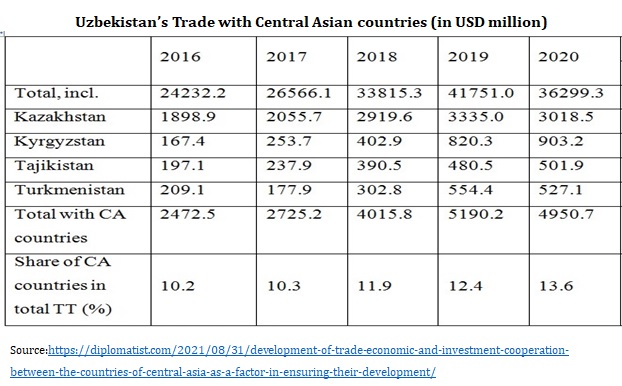
Despite the positive developments in the intra-regional trade in Central Asia, there is still potential for growth. New forms and methods to stimulate mutual trade should be established in this direction. Joint initiatives for industrial collaboration should also be encouraged. The Uzbek President also emphasised the need of digitization in economic sectors, which would cut costs and assure product competitiveness.[3] Simultaneously, in order to boost the entire regional investment attractiveness, it is vital to endeavour to develop a single favourable business climate. The interconnectivity between South and Central Asia has been promoted by Uzbekistan. A recent resolution on improving the linkages between Central and South Asia adopted by the UN General Assembly is crucial in this regard. In order to penetrate the markets of India, Pakistan, and China, President Mirziyoyev emphasized the necessity to create a road map to support alternative transport corridors.[4]
Mirziyoyev also expressed his concerns on the security of food, energy, and the environment and stated that coordinated efforts are required to address these issues. Along with this, Central Asian nations should work together to ensure Afghanistan's economic recovery because Afghanistan's instability has an impact on the entire region of Central Asia. Recent unrest in the Central Asian region has shown the existence of outside forces who wish to destabilise the region. As a result, President Mirziyoyev stressed the importance of frequent talks between the leaders of the security councils and special services of the Central Asian nations in all of these sectors.[5]
Uzbekistan is the flag bearer of this regional mechanism. This has not only helped grow the intraregional socio-economic and political trajectories but has also provided a validation to the initiatives of President Shawkat Mirziyoyev’s at home. The fourth meeting witnessed growing coordination among Uzbekistan, Kyrgyzstan, and Kazakhstan, which is a positive indicator given that Kazakhstan and Uzbekistan are the two largest nations in terms of GDP and population, respectively. Kazakhstan has consistently advocated for Central Asian regional integration. A stronger partnership between Uzbekistan and Kazakhstan would help to keep the region cohesive.
Tajik and Kyrgyz President expressed concerns on Afghanistan
Tajik President Emomali Rahmon reiterated his strong position on Afghanistan, stating that the country's situation will worsen in the near future. He further emphasised the Taliban leadership's disregard for inclusive governance, despite their commitments. Some Taliban government officials are listed as terrorists and terrorist organisations by the UN Security Council, and they pursue a harsh religious conservative policy. They have already repealed secular legislation and replaced it with Sharia law.[6] Rahmon's remarks were based on the fact that none of the governments have recognised the Taliban administration, and the country is already in the grip of a severe humanitarian crisis. Tajikistan shares a long and fragile border with Afghanistan, making it exposed to spillover from northern Afghanistan. Additionally, there have been reports of Islamic State Khorasan (IS-K) which is now very active in northern Afghanistan, recruiting cadres from Tajikistan's Badakhshan region.[7]
The meeting's host and president of Kyrgyzstan, Sadyr Japarov, emphasised that the Taliban are a harsh reality and that it is necessary to cooperate bilaterally and jointly to restore peace and stability to Afghanistan. Since the coronavirus outbreak, Kyrgyzstan has encountered numerous difficulties in maintaining its import and export supply chains with neighbours like Kazakhstan. With the latest conflict between Russia and Ukraine, this was once again evident. Kyrgyz President, therefore, underscored the significance of removing the tariff and non-tariff barriers while emphasizing on free trade, investment, and digitization. Additionally, he highlighted that border checkpoints with Kazakhstan should not hinder bilateral trade but rather help it to expand. Due to the current regional and global crises, Kyrgyzstan, a country that depends on remittances (from Russia and Kazakhstan), faces threats to its food security, as well as higher unemployment and inflation. Therefore, greater cooperation with other Central Asian nations may help Bishkek.
Kazakhstan puts forward the idea of Treaty of Friendship
In view of rising geopolitical concerns, the objective of the Cholpon-Ata meeting was to foster deeper cooperation between Central Asian governments. ‘The Treaty of Friendship, Good-Neighborliness, and Cooperation for Development of Central Asia in the Twenty-First Century’ was proposed by Kazakh President Tokayev and was signed by Uzbek President Shawkat Mirziyoyev and Kyrgyz President Sadyr Zaparov. Presidents Emomali Rahmon of Tajikistan and Serdar Berdymukhamedov of Turkmenistan did not sign the agreement citing that following the "completion of domestic procedures in their countries, they will sign this agreement”.[8]Both Turkmenistan and Tajikistan have Presidents who exercise adequate political authority for making all major decisions; hence, using domestic procedures as an excuse is inappropriate in this context. Turkmenistan's neutrality policy and Tajikistan's significant border dispute with Kyrgyzstan may be the reasons why the two countries chose not to sign the friendship treaty.
Kazakh President also mentioned that the ‘Trans-Caspian International Transport Route connecting from China to Europe through Kazakhstan and the Caucasus which is being actively developed by Kazakhstan. In addition to this, Nur Sultan also expressed its willingness to contribute to the construction of the Mazar-e-Sharif - Kabul - Peshawar railway which has been pushed by Uzbekistan.[9] However this project still has a lot of problems including the funding and security issues.
Conclusion
This meeting is notable for two reasons. First, it happened at a time when the region is experiencing geopolitical and geo-economic turmoil as a result of the Russia-Ukraine conflict, which poses risks to Central Asia. Second, the Central Asian region is experiencing a number of internal issues in terms of socio-economic, political, and security concerns. As a result, consultative meetings are beneficial in fostering closer cooperation among Central Asian countries in order to manage these challenges in amicable and inclusive ways.
Endnotes :
[1]Aizada Nuriddenova,“What Happened at the Latest Central Asian Leaders’ Meeting? The Diplomat, July 23, 2022. https://thediplomat.com/2022/07/what-happened-at-the-latest-central-asian-leaders-meeting/
[2] “Central Asia Has Key Growth Drivers and Potential for Tripling Regional Trade Volumes To US$15 billion”, Silk Road Briefing, Jul 21, 2022. https://www.silkroadbriefing.com/news/2022/07/21/central-asia-has-key-growth-drivers-and-potential-for-tripling-regional-trade-volumes-to-us15-billion/
[3] “Address by President of the Republic of Uzbekistan Shavkat Mirziyoyev at the fourth Consultative Meeting of the Heads of State of Central Asia”, The Embassy of Uzbekistan in India, July 21, 2022. http://www.uzbekembassy.in/address-by-president-of-the-republic-of-uzbekistan-shavkat-mirziyoyev-at-the-fourth-consultative-meeting-of-the-heads-of-state-of-central-asia/
[4]Ibid.
[5]Ibid.
[6]Darya Podolskaya, “Summit of Heads of Central Asian countries: Situation in Afghanistan to worsen”, 24.kg news agency 21 July 2022. https://24.kg/english/240235_Summit_of_Heads_of_Central_Asian_countries_Situation_in_Afghanistan_to_worsen/
[7]Lucas Webber and Riccardo Valle,“Islamic State in Afghanistan Looks to Recruit Regional Tajiks, Inflict Violence Against Tajikistan”, The Diplomat, April 29, 2022. https://thediplomat.com/2022/04/islamic-state-in-afghanistan-looks-to-recruit-regional-tajiks-inflict-violence-against-tajikistan/
[8]Kazakhstan announces initiatives at fourth summit of Central Asia states By Georgi Gotev | EURACTIV.com, 22 July 2022. https://www.euractiv.com/section/central-asia/news/kazakhstan-announces-initiatives-at-fourth-summit-of-central-asia-states/
[9]Aida Haidar, “President Tokayev Announces Major Initiatives at Consultative Meeting of Central Asian Leaders in Cholpon-Ata”, The Astana Times, 21 July 2022.https://astanatimes.com/2022/07/president-tokayev-announces-major-initiatives-at-consultative-meeting-of-central-asian-leaders-in-cholpon-ata/
(The paper is the author’s individual scholastic articulation. The author certifies that the article/paper is original in content, unpublished and it has not been submitted for publication/web upload elsewhere, and that the facts and figures quoted are duly referenced, as needed, and are believed to be correct). (The paper does not necessarily represent the organisational stance... More >>
Image Source: https://astanatimes.com/wp-content/uploads/2022/07/ca.jpg



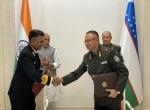
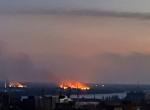
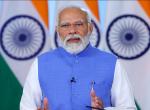
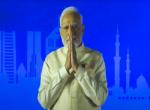


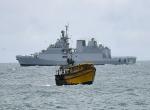
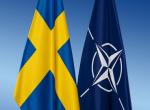
Post new comment